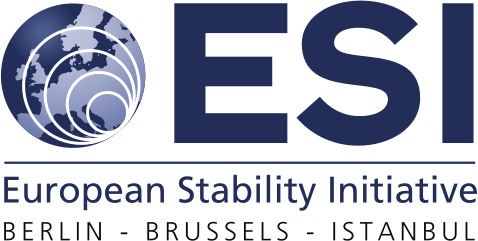Ergenekon and the Secret History of Turkey – Who is Who in the Russian Caucasus Debate
This newsletter is also available in Armenian: "Թուրքիայի պատմության մութ անկյունները" (published in the Armenian business daily Capital on 15 December 2009)
Dear friends of ESI,
Sometimes the exposure of a hidden truth changes the course of history.
A White House tape, recording the US president six days after the Watergate break-in, sealed President Nixon's fate, forcing his resignation within weeks. Aleksandr Solzhenitsyn's The Gulag Archipelago, smuggled out of the USSR and published in 1973, shocked the world by describing the vast Soviet system of prison labour. Throughout history, those in power have kept secrets hidden from the public eye. But if it leads to a culture of impunity for crimes committed by the state, secrecy becomes dangerous. A culture of impunity thrives on secrecy, and on complicit media and a passive civil society.
In Turkey, both secrecy and impunity for those defending the state against its enemies at home and abroad were long taken for granted. Attempts to cast light on the activities of groups and institutions referred to as the "deep state" (derin devlet) have invariably failed. Some have even questioned whether the deep state really exists.
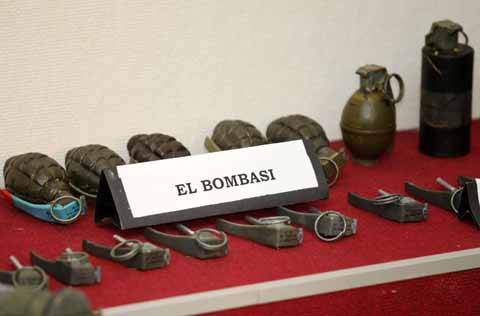 |
|
Hand grenades found in Poyrazköy / Istanbul (April 2009) |
Recent weeks have seen the Turkish veil of secrecy drawn aside in a spectacular manner. Two documents have emerged which describe, in detail, operations planned by members of the Turkish armed forces to terrify, frame and even assassinate innocent civilians, Christians or Muslim students, and undermine the elected government.
One document is called Operation Cage (Kafes) Action Plan. The other is the Action Plan to Combat Reaction – Current Status. Each of these documents in itself, but even more so when read together, deals a serious blow to the credibility and legitimacy of the Turkish security structures. Both have come to light as a result of the current Ergenekon court case. The case has involved Istanbul prosecutors investigating a range of alleged crimes committed by groups linked to the Turkish security structures with the apparent intent to topple the elected government.
An electronic copy of the Cage Plan was found – encrypted - on a CD seized in April 2009, when a former member of the Turkish Underwater Assault Team of the Naval Forces was arrested. A signed copy of the Reaction Plan was found during the arrest of another former military officer in June 2009. The Turkish General Staff immediately dismissed it as fake, a mere "piece of paper." The Chief of the General Staff even alleged a conspiracy against the military. Then, in October 2009, a whistleblower within the General Staff sent the original signed copy of the Reaction Plan to a Turkish prosecutor, together with a letter explaining the role of the former Deputy Chief of the General Staff in drawing up the plan. This was made public on 24 October. The Cage Plan was made public on 19 November in an article in the Taraf daily.
What makes these two documents so explosive?
The Cage Plan is remarkably specific. There is a date on it: March 2009. There is the name of the author: Ercan Kirectepe, Naval Officer, Acting Special Operations Force Command. The Plan sets out a distribution of tasks among some 35 members of the Navy, under a consultative assembly presided over by Vice Admiral Feyyaz Ogutcu. And there is a clear, concrete target:
"to increase both internal and external pressures on the AKP Government, to keep the public preoccupied and to change the agenda, particularly the Ergenekon case, by calling into question the safety of the life and property of non-Muslims."
Most chilling of all, there is a list of concrete tasks to be prepared and carried out, including these:
"(d) Operation stage:
(1) Bombs will be detonated at various quarters in the Adalar district/the Princes islands near Istanbul.
(2) Assassinations will be organized against persons known as fierce defenders of minority rights.
(3) Sound bombs will be placed in identified locations such as the vicinity of AGOS Newspaper.
(4) By placing suspicious packages at many spots and informing the police of them, the security forces will be kept preoccupied.
(5) Actions with bombs will be carried out at piers from which boat journeys to Adalar originate.
(6) Sensational operations will be executed towards the cemeteries of non-Muslims.
(7) One or several popular non-Muslim businessmen and artists will be kidnapped.
(8) In regions with a dense non-Muslim population vehicles, houses and workplaces will be set on fire at close intervals.
(9) Similar actions will also be conducted in provinces with a high population of non-Muslims, such as Istanbul and Izmir.
(10) Responsibility for sabotage, kidnapping and assassination operations will be claimed by reactionary organizations. The organisations themselves will be determined by way of coordination with the special plan cell leaders."
The full text of the Cage Plan in English translation can be found here.
The Action Plan against Reaction, signed by a colonel working directly in the Office of the General Staff, defines a similar target:
"To put an end to hesitation over this issue by revealing the hidden face of the religious reactionary elements and to eradicate public support for such networks. To minimize the impact of the erosive campaigns staged in the framework of Ergenekon and to put an end to the negative propaganda against the Turkish Armed Forces."
To achieve this, the Action Plan outlines a set of concrete measures, directed primarily against the conservative Gulen movement that supports both the AKP government and Turkey's EU aspirations:
"The theme, 'Fethullah Gulen supporters are out of control, attacking the Turkish Armed forces head on,' will be pursued and work towards getting even conservative citizens to say 'this is too much, we are all Muslims, but these supporters of Fethullah Gulen are making provocations in order to attack the Turkish Armed Forces' will be carried out."
"During the raids against the addresses of Gulen dormitories (ısık evleri) to be conducted under military law, weapons, ammunitions, plans and other material will be arranged to be found so that the Fethullah Gulen group is described as an armed terrorist organization; Pro-Fethullah Armed Terror Organisation (FATO) investigations will be conducted under military jurisdiction."
"News articles will be written that Turkish Armed Forces staff members arrested under Ergenekon investigation are innocent and that they are slandered just because they effectively fight reactionary Islam."
"The issue of moderate Islam will be particularly emphasized, with the fact that Fehtullah Gulen followers act under US guidance and aim to degrade the originality of Islam being voiced intensively."
"House raids will be carried out and it will be ensured that besides weapons and munitions, objects are found that will point to relations with groups that Fethullah Gulen supporters will be made to appear associated with (Jewishness, CIA, MOSSAD, Moon Sect, Khomeini, etc)."
"It will be ensured that information and documents that arouse Anti-Alevite feelings are found in such houses as part of house raids."
 |
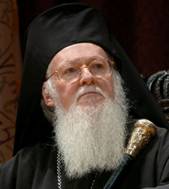 |
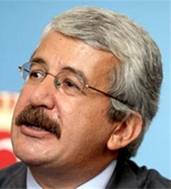 |
|
Yasemin Congar |
Bartholomew |
Ufuk Uras |
Pro-European Turkish media, above all the Taraf daily, played a decisive role in uncovering and disseminating such information. Turkey's minority representatives have also been speaking out. On 4 December the Armenian weekly AGOS ran the headline "The Cage did not Surprise us". The Armenian advisor to (CHP) Mayor of Adalar (the Princes islands near Istanbul) stated that "we experienced such incidents in Heybeliada, Kinaliada and Buyukada. We thought these were separate incidents, but when we saw the Cage plan, we understood that they were all part of a detailed plot." Greek Orthodox Patriarch Bartholomew told Zaman daily that dark forces planned to use minorities to overthrow the government, and that "it is a very satisfactory development that the Turkish police and the prosecutors have been revealing those dark plans so the responsible people are captured and tried."
Eyup Can wrote in Hurriyet (21 November) that "if even half of what is written in Taraf is accurate everybody with a conscience in this country has to go mad." Hadi Uluengin noted in the same paper on 24 November that "if this is true, then this is the most terrible conspiracy ever planned within the ranks of the Armed Forces." Independent left-wing MP Ufuk Uras stated that "those who see this and do not write about it become accomplices to that crime." ("Uras: People who ignore Cage Plan are accomplices").
The ongoing Ergenekon investigation will hopefully uncover the full genesis of these documents. Only a court of law can determine the guilt of any specific individual. But the debates surrounding documents are already changing Turkey. In July, a new law passed by the Turkish Parliament extended the power of civilian courts to try crimes committed by both former and active members of the military. And last week three retired four-star generals were for the first time interrogated by civilian prosecutors on alleged coup plots in 2003-2004.
The silent revolution in Turkish civil-military relations is in full swing.
Russian perspectives and the future of the Caucasus
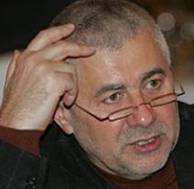 |
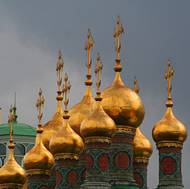 |
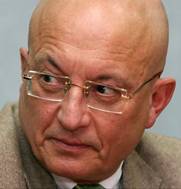 |
|
Gleb Pavloski |
Moscow |
Sergey Karaganov |
The South Caucasus – Georgia, Armenia and Azerbaijan – reappeared in the international limelight in the early 1990s following the fall of the Soviet Union and the emergence of three new independent states. This also brought the question of the future influence of Russia, for centuries the colonial power in the region.
With its empire gone but many of its imperial entanglements intact, Russia maintained troops on the ground in all three states. The legacy of Empire continues to shape the current Russian debate on the South Caucasus: a fear of losing influence, often allied to a sense of frustration; the conviction that control of the region is vital to Russia's standing as a great power; and a sense of rivalry not only with the US but also with the EU.
A new ESI Picture Story – Privileged Interests? How Russia debates the South Caucasus – takes a close look at this debate.
Already in 2004, year one of the big-bang East European enlargement, Russian analyst and EU expert Timofey Bordachev noted that rivalry in the common neighbourhood between Russia and the EU was almost inevitable:
"… the European Union has to intensify its policy toward countries in the western part of the CIS and in the South Caucasus, since following EU enlargement these regions will become the Union's immediate neighbors. Simultaneously, the European project attracts the attention of the elites in a majority of post-Soviet states – a factor that greatly increases the rivalry between Russia and the European Union."
Vladimir Degoev, head of the Centre of Caucasus Studies, also predicted a growing confrontation:
"Whatever the projects designed for the Caucasus, they are doomed if they ignore Russian interests. … Presently, it is difficult to outline the contours of a compromise that Moscow would be ready to make with the West in Transcaucasia … the idea of turning Azerbaijan, Georgia or Armenia into a military and political affiliation of the EU will inevitably encounter Russia's resistance with all of the negative consequences concerning peace and stability in the South Caucasus."
Other prominent voices in this debate include Sergey Karaganov, Gleb Pavlovsky, Alexander Dugin, Andrei Illarionov, Ekho Moskvya, Maxim Shevchenko, the Carnegie Moscow Centre and others.
Part one of a new ESI Russia Manual – Who's Who in the Russian Debate on the Caucasus? focuses on the print media.
We hope these documents and references are useful and can contribute to an informed debate on European policy towards this strategic region.
Many best regards,

Gerald Knaus
- Operation Cage Action Plan (English translation)
- Whistleblower Letter concerning the Action Plan Against Reaction (English translation)
- Hurriyet Daily News, "How the Turkish Military Conspires Against Turkish Society" (20 November 2009)
- Bianet, "Action Plan Against Reactionary Forces – a Chronology" (28 October 2009)
- Today's Zaman, "Did Basbug know all along that the military conspiracy was real?" (28 October 2009) in English
- ESI picture story: The battle for Turkey's Soul. Party closures, gangs and the state of democracy (April 2008)
- ESI film: Istanbul – Truth, fear and hope (2008) - Fethiye Cetin - Yasemin Congar - Perihan Magden - the Legacy of Hrant Dink
- NEW ESI Picture Story – Privileged Interests? How Russia debates the South Caucasus
